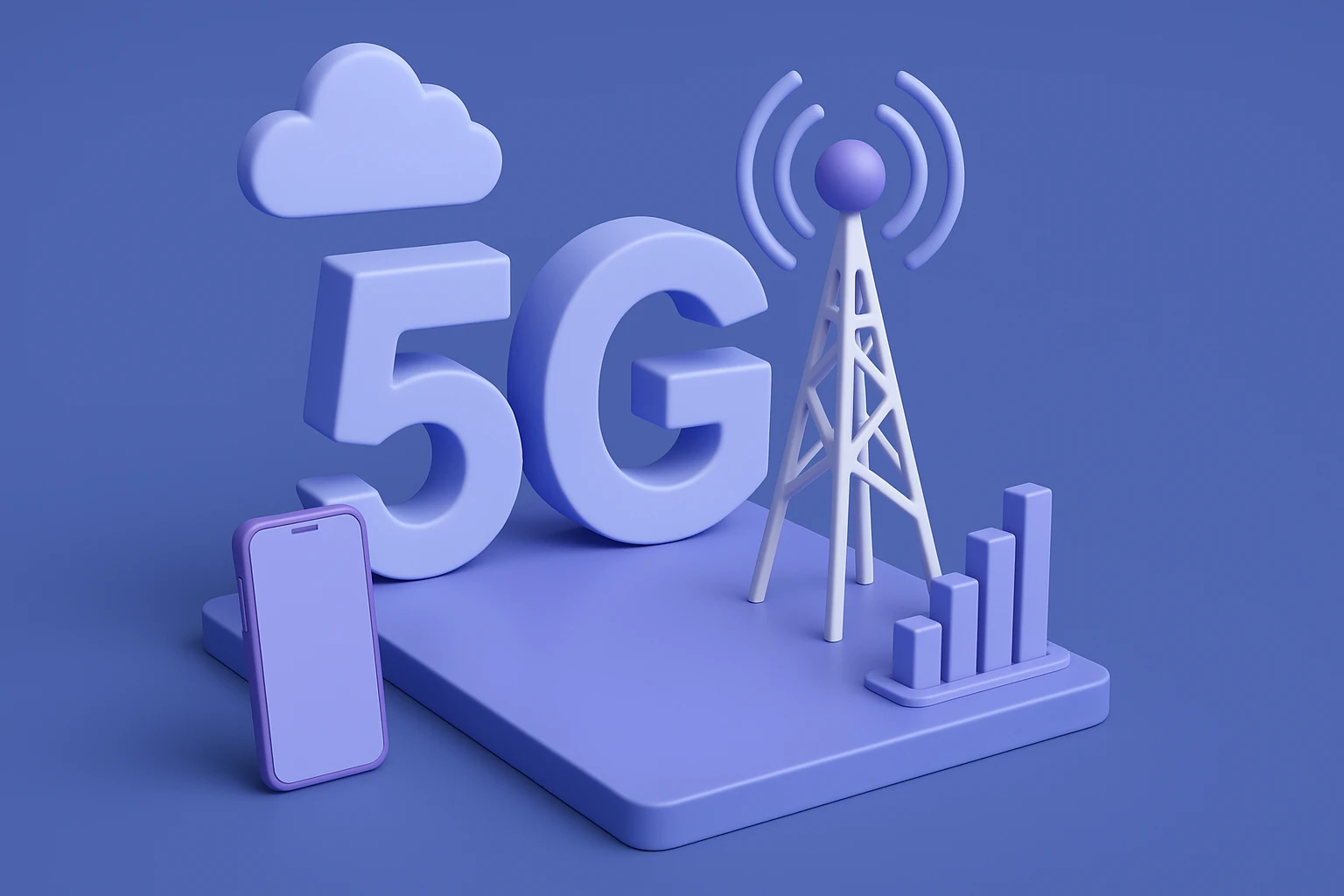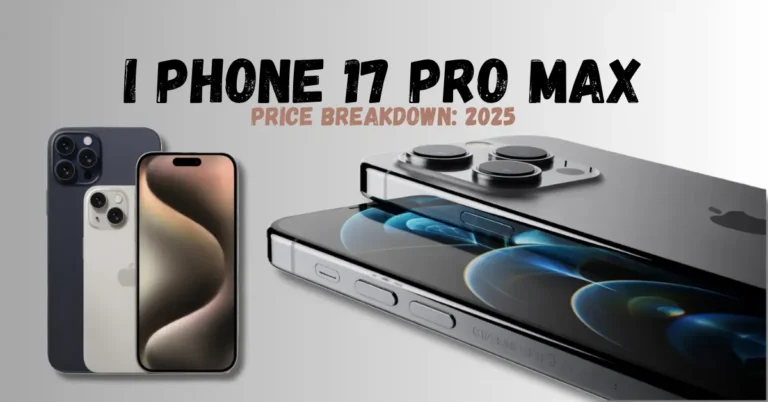Introduction
Imagine streaming ultra‑high‑definition video with zero buffering while attending a virtual reality concert—seamlessly, on your phone. That’s the promise of 5G technology in 2025, and it’s transforming the way we live, work, and play. In this post, we’ll unpack how 5G technology in 2025 works under the hood, explore why its rollout matters now more than ever, and highlight real‑world applications that are reshaping industries.
Table of Contents
What Is 5G?
5G technology in 2025 refers to the “fifth generation” cellular technology, succeeds 4G LTE by delivering peak download speeds up to 10 Gbps, latencies as low as 1 ms, and capacity to connect millions of devices per square kilometer en.wikipedia.org. Standardized by 3GPP under the IMT‑2020 framework, 5G New Radio (NR) operates across low (<1 GHz), mid (1–6 GHz), and high (mmWave, >24 GHz) bands to balance coverage and performance en.wikipedia.org.
How 5G Technology in 2025 Works: Key Innovations
Understanding the magic behind 5G technology in 2025 means diving into its core innovations:
- Massive MIMO & Beamforming
- Deploys hundreds of antennas to direct signals precisely to users, boosting spectral efficiency and throughput en.wikipedia.org.
- Millimeter‑Wave Spectrum
- Leverages high‑frequency bands (>24 GHz) for ultra‑fast data rates, ideal for dense urban hotspots en.wikipedia.org.
- Network Slicing
- Creates multiple virtual networks (e.g., one for IoT, another for emergency services) on the same infrastructure to guarantee tailored performance, reliability, and security gsma.com.
- Edge Computing
- Processes data closer to users by integrating mini‑data centers at base stations, slashing latency for critical applications like AR/VR and autonomous vehicles en.wikipedia.org.
Figure: Simplified 5G architecture illustrating core, edge, and radio access network components.
4G vs. 5G: A Quick Comparison
| Feature | 4G LTE | 5G NR |
|---|---|---|
| Peak Download Speed | Up to 1 Gbps | Up to 10 Gbps |
| Latency | ~30–50 ms | ~1–10 ms |
| Connection Density | ~100 K devices/km² | ~1 M devices/km² |
| Network Slicing | No | Yes |
| Use Case Focus | Mobile broadband | eMBB, URLLC, mMTC |
Why 5G Technology in 2025 Matters
Widespread Adoption & Coverage
- By 2025, 5G technology in 2025 networks are expected to cover one‑third of the world’s population, with 1.2 billion 5G connections forecast globally telit.commwclasvegas.com.
- Emerging markets such as India and Brazil are accelerating 5G deployments, driving digital inclusion and economic growth.
Economic & Industry Impact
- The automotive sector alone could see €573 billion added to GDP by 2030 from digital technologies like 5G‑enabled smart factories and autonomous vehicles cadenaser.com.
- Manufacturing, healthcare, and retail are leveraging URLLC for remote surgery, real‑time quality control, and immersive shopping experiences.
Sustainability & Smart Cities
- 5G’s energy‑efficient architecture and precision resource allocation reduce network power consumption.
- Smart city projects—traffic management, public safety drones, and environmental sensors—are now feasible at scale thanks to massive IoT connectivity (mMTC).
Real‑World Use Cases
Enhanced Mobile Broadband (eMBB)
- Immersive Media: Live VR concerts and 16K streaming become mainstream with 5G technology in 2025 speeds.
- Gigabit Wi‑Fi Replacement: Fixed Wireless Access (FWA) challenges traditional ISPs in suburban and rural areas.
Ultra‑Reliable Low‑Latency Communications (URLLC)
- Autonomous Vehicles: Vehicle‑to‑everything (V2X) communications for safer roads.
- Remote Surgery: Surgeons operate on patients thousands of miles away with real‑time haptic feedback.
Massive Machine‑Type Communications (mMTC)
- Smart Agriculture: IoT sensors optimize irrigation and fertilizer use, boosting yields.
- Industry 4.0: Automated assembly lines self‑optimize through real‑time data analytics.
Personal Insights
When I first experienced 5G technology in 2025 on a new smartphone, my daily commute felt futuristic: HD video calls on the metro were glitch‑free, and my fitness tracker synced data instantly to cloud dashboards. Later, I tested a portable 5G hotspot—my work‑from‑home setup saw latency cut in half, making multiplayer coding sessions on virtual sandboxes feel native and immersive.
FAQs
Q1: Is 5G safe for health?
Yes. Regulatory bodies like the WHO and FCC confirm that 5G radiation levels are well within international safety limits.
Q2: Do I need a new SIM card for 5G?
Most carriers require a 5G‑capable SIM and handset. Check with your provider for upgrade options.
Q3: Will 5G replace Wi‑Fi?
Not entirely. Wi‑Fi 6/6E and 5G will coexist, each optimized for different environments—indoor vs. outdoor, localized vs. wide‑area coverage.
Q4: How does 5G affect battery life?
Early 5G devices saw higher power draw, but advancements in chipset efficiency and network optimization now deliver comparable—or even improved—battery performance.
Q5: When will 5G‑Advanced (5G‑A) arrive?
5G‑A standards (3GPP Release 18) begin rolling out in 2025, promising up to 20 Gbps speeds and further latency reductions.
Conclusion & Call‑to‑Action
5G technology in 2025 isn’t just another network upgrade—it’s the backbone of the next digital revolution, powering everything from remote surgeries to smart factories. Ready to stay ahead of the curve?
👉 Share your experiences with 5G in the comments below.
👉 Explore our deep dive on IoT applications in the age of 5G here.
👉 Subscribe to our newsletter for monthly updates on the latest in telecom innovation!





[…] Ready to dip your toes into the cloud? Share your biggest question about cloud computing in the comments below, or tell us about your first cloud project (successes and lessons learned!). Want to dive deeper? Explore our guide to What Is VPN? How It Works and Why You Should Use One in 2025 or 5G Technology in 2025: How It Works & Why It Matters | Your Ultimate Guide. […]